Understanding the Car’s Braking System
The number of accidents in Asian countries are on the rise. In Europe, car manufacturers are bound by law to meet certain safety requirements. For instance, in 2007 the European commissioned urged car manufacturers to include the EBA feature in all cars produced in the EU by 2009. ABS on the other hand has been a requirement for all passenger cars sold in the EU. This article discusses different braking systems installed in cars these days.
EBA (Emergency Brake Assist)
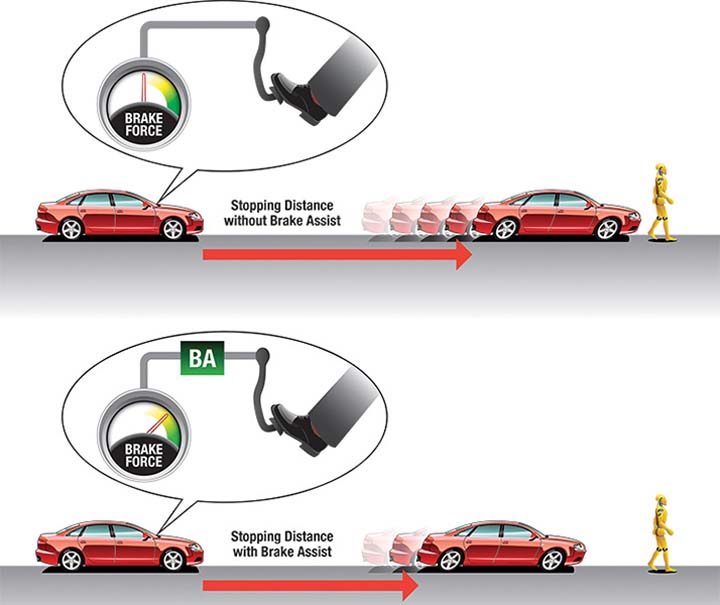
EBA stands for emergency brake assist. When applying brakes in emergency, the EBA kicks in providing extra braking power. The Video below gives a detailed explanation on how the EBA system works.
(Video Courtesy Neodov)
Video Transcription:
During normal driving, the brakes are applied gradually and gently. So braking force is proportional to the pressure applied to the pedal. On the other hand, an emergency situation calls for heavy braking, effective in the shortest possible time. Unfortunately, the faster the pedal is depressed, the more the system’s inertia reduces its effectiveness. Under normal circumstances, the amount of pressure on the brake pedal corresponds to the amount of deceleration. In emergency braking, to achieve the same deceleration, you need to apply much more pressure. The C5 and other Citrons are fitted with Emergency Braking Assistance (EBA), which multiplies the effectiveness of brakes if the pedal is pushed quickly. Stamping on the brake pedal in an emergency opens another valve in the master cylinder and servo. In this way, the pressure of the hydraulic fluid is significantly increased and therefore the underfoot sensation felt by the driver is less. So with the same braking pressure, the pedal travels further, quickly achieving maximum emergency braking pressure. This emergency braking assistance system, which is linked to ABS and EBD, makes the C5 extremely safe and secure in comparison with the cars without EBA.
ABS (Anti-Lock Braking System)
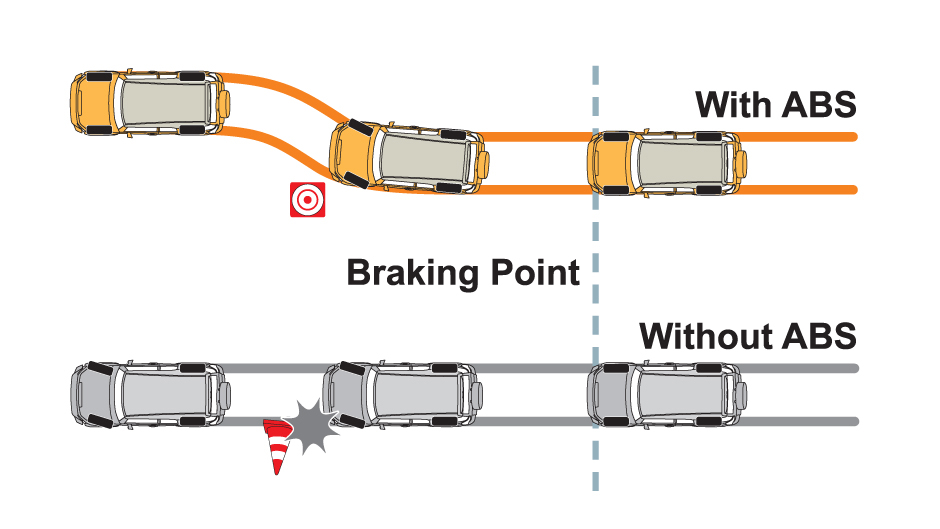
ABS stands for Anti-Lock Braking System. In cars without ABS, when brakes are applied in emergency, the brakes lock up. When brakes lock up, the steering ability of the driver is affected. The main purpose of ABS is to give the driver control over the steering when braking in emergency (hard braking). There is a misconception about ABS reducing stopping distance, it should be noted that ABS does not reduce stopping distance.
EBD (Electronic Brakeforce Distribution)
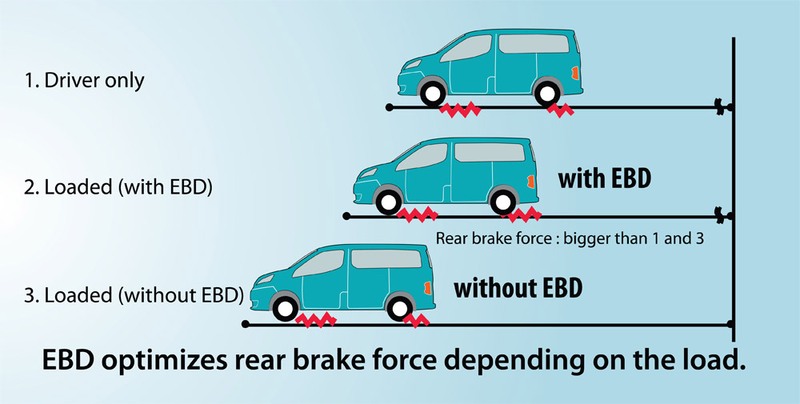
EBD stands for Electronic Brakeforce Distribution. Each wheel of a car does a different amount of work. And thus, they don’t need the same amount of braking force to be applied to them. When braking in emergency, the weight of a car is shifted forward. Wheels with more weight have better grip and are not likely to lock up. EBD is considered as an extension of ABS. EBD monitors each wheel’s speed, acceleration and deceleration, and determines the load, each wheel is bearing. It adjusts the valves in the braking system and distributes the braking force according to the load carried by each wheel. EBD also monitors the steering wheel angle. If a car is understeering or over steering during braking, EBD brings the car back to its intended track.
AEB (Autonomous Emergency Braking)
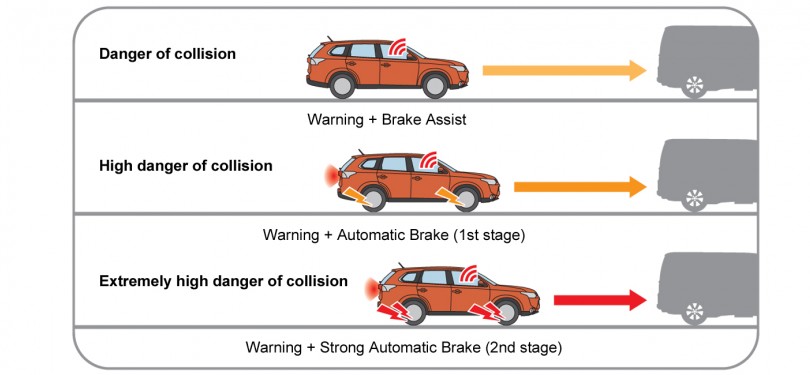
AEB stands for Autonomous emergency braking. They are designed to help in applying brakes automatically. AEB warns the driver about a possible collision and applies the brakes automatically if he or she does not respond to the warning.
Usually, AEB systems work well for rear-end collisions. This is because rear end collisions are predictable and very common. In Pakistan, most accidents happen due to rear-end-collision. This feature should be included in all cars manufactured locally.
Let’s have a look at the braking system of locally assembled cars in Pakistan:
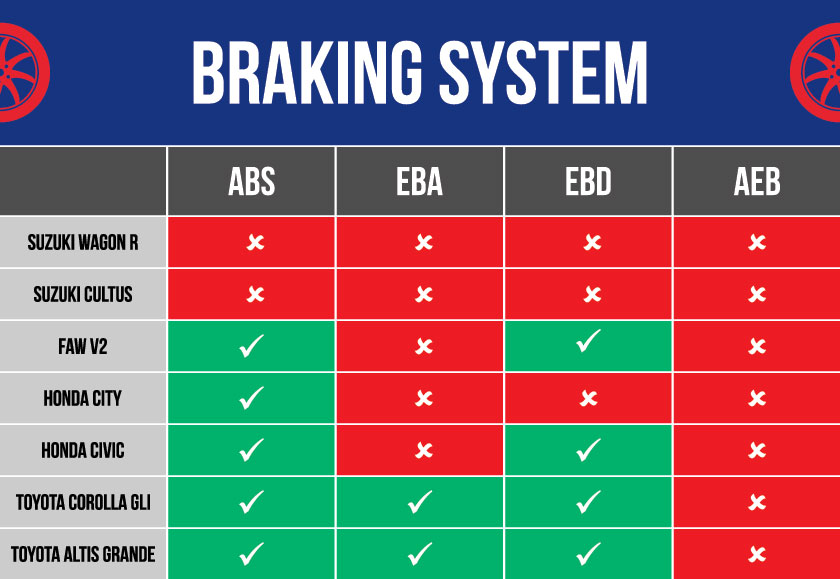

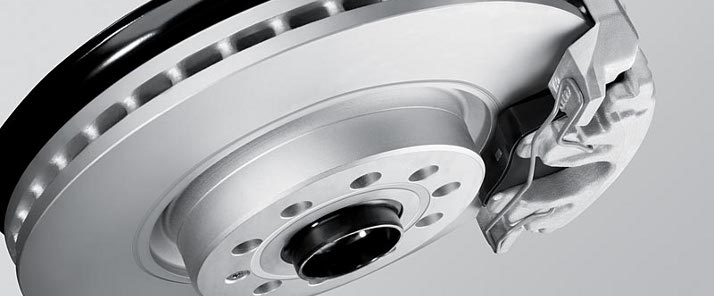
what about suzuki liana?
Friends, if anybody have a brake issue in his car, or car does not stop at emergency brake, bring the vehicle at our workshop we will fix the fault with guarantee, our workshop Toyota service center and Spare parts is situated near Airport chowk, Qadeer Market, New gulzar-e-Quaid, Rwp. Contact me 0331-5600026.
thanks.